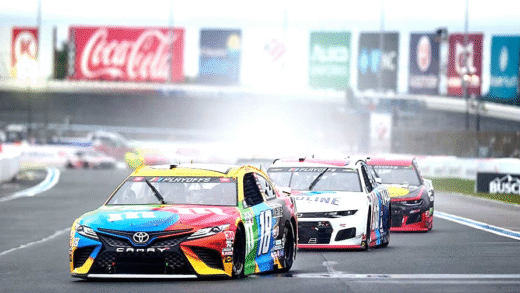Safety glass is essential in vehicles and buildings for injury prevention, compliance with regulations, and durability. It minimizes sharp shards during impacts and is required in many safety regulations. Additives like PVB enhance performance, while understanding these features helps consumers make informed choices. Choosing safety glass is crucial for ensuring safety and reducing risks.
How Safety Glass is Made: Understanding the Process
Safety glass is crucial in preventing injuries during accidents. How safety glass is made involves several steps that enhance its strength and durability. The manufacturing process typically includes:
- Raw Material Preparation: The process begins with the selection of high-quality glass, which can be tempered or laminated.
- Heating: For tempered glass, the glass is heated to over 600 degrees Celsius. This heating process makes the glass stronger.
- Rapid Cooling: After heating, the glass is rapidly cooled. This process, known as quenching, creates internal stresses that increase its strength.
- Lamination: For laminated glass, layers of glass are bonded with a plastic interlayer. This prevents shattering and keeps shards in place during an impact.
These steps ensure that safety glass can withstand impacts better than regular glass, significantly reducing the risk of injury during collisions. Understanding this process helps consumers appreciate the importance of safety glass in vehicles and buildings.
What Makes Safety Glass Different from Regular Glass?
Safety glass differs significantly from regular glass in terms of its design and functionality. The main characteristics include:
- Shattering Behavior: Unlike regular glass, which shatters into sharp shards, safety glass breaks into small, blunt pieces that minimize injury risks.
- Strength: Safety glass is often tempered or laminated, providing enhanced strength and resistance to impacts.
- Durability: It is designed to withstand extreme conditions, making it ideal for use in vehicles and buildings.
These features make safety glass essential for protecting lives in accidents. Understanding the differences can help consumers make informed choices about glass products.
Types of Safety Glass Used in Cars: What You Should Know
In the automotive industry, various types of safety glass are utilized to enhance passenger protection. The most common types include:
- Laminated Glass: Used in windshields, it consists of two layers of glass with a plastic interlayer. This type prevents shattering and holds together during an impact.
- Tempered Glass: Often used for side and rear windows, it is treated with heat to increase strength. When broken, it shatters into small, less harmful pieces.
- Polycarbonate Glass: This is a lightweight and shatter-resistant option, often used in specific applications like sunroofs.
Each type of safety glass has unique properties that contribute to the overall safety of vehicles. Understanding these types can guide consumers in selecting safer vehicles.
Why Safety Glass Shatters into Tiny Pieces in Accidents
Safety glass is specifically designed to shatter into tiny, blunt pieces rather than sharp shards. This crucial difference arises from the manufacturing process and the materials used. When safety glass, like laminated or tempered glass, breaks, it does so in a way that minimizes the risk of serious injury.
In contrast, regular glass can shatter violently, sending sharp fragments flying. This can result in cuts and injuries during accidents. Safety glass, on the other hand, holds together due to the interlayer or its tempered structure. The tiny pieces formed are less likely to cause harm, providing an added layer of protection for vehicle occupants.
Understanding this unique shattering behavior is essential for consumers. It highlights the importance of choosing safety glass for windows and windshields, especially in vehicles where safety is paramount.
The Impact Force: How It Affects Glass Breakage
Impact force plays a critical role in how glass breaks. When safety glass is subjected to varying levels of impact, its response can differ greatly from that of regular glass. The force of the impact determines whether the glass will shatter, crack, or remain intact.
Here are key points to consider about impact force and glass breakage:
- Low Impact Force: With lower forces, safety glass may only develop minor surface cracks without breaking completely.
- Moderate Impact Force: At this level, safety glass will likely shatter into small pieces, minimizing injury risks.
- High Impact Force: In extreme cases, safety glass can fail, but it still tends to break into less harmful pieces compared to regular glass.
Understanding these factors can help consumers appreciate why safety glass is vital in vehicles and buildings. It not only protects against impacts but also reduces the risk of severe injuries during accidents.
Baseball vs. Car Accident: The Glass Breakage Comparison
When comparing the breakage patterns caused by a baseball versus a car accident, distinct differences emerge. A baseball striking glass creates a localized impact, often resulting in a single point of failure. This can lead to spider-webbing cracks or small shatters, depending on the glass type.
Conversely, a car accident involves a much greater force distributed across a wider area. The impact can cause complete shattering or significant damage to the glass structure. Here’s a breakdown of how each scenario affects glass:
- Baseball Impact: Generally causes minor damage, with safety glass often remaining intact due to its design.
- Car Accident Impact: Involves high energy, leading to more extensive damage, but safety glass still tends to shatter into small, blunt pieces.
This comparison illustrates the effectiveness of safety glass in protecting occupants in vehicles. By understanding these differences, consumers can make informed choices about safety glass products.
Safety Implications: Why Using Safety Glass Matters in Vehicles and Buildings
Safety glass is essential for protecting lives in various environments, especially in vehicles and buildings. Its unique properties significantly reduce injury risks during accidents. Key reasons for its importance include:
- Injury Prevention: Safety glass minimizes sharp shards that can cause serious injuries. In vehicles, it protects passengers from flying glass during collisions.
- Compliance with Regulations: Many countries have stringent regulations mandating the use of safety glass in specific applications, ensuring that manufacturers prioritize consumer safety.
- Durability: Safety glass withstands extreme weather conditions, making it ideal for both automotive and architectural uses.
Using safety glass not only enhances personal safety but also contributes to overall building integrity and vehicle reliability. Understanding its importance is crucial for anyone making decisions about glass products.
The Role of Additives and Laminates in Safety Glass Properties
In safety glass manufacturing, various additives and laminates play a crucial role in enhancing its performance and safety features. Some notable contributions include:
- Polyvinyl Butyral (PVB): Commonly used in laminated glass, PVB acts as an interlayer that holds glass layers together, preventing shattering and maintaining visibility during impacts.
- Heat-Resistant Coatings: These coatings can improve the thermal performance of glass, making it more resilient to temperature fluctuations.
- Coloring Agents: These are added not only for aesthetic purposes but also to reduce glare and improve UV protection.
The incorporation of these materials not only enhances the structural integrity of safety glass but also improves its functionality, making it a vital choice for both vehicles and buildings. Consumers should be aware of these features when selecting glass products.
Conclusion: The Importance of Choosing the Right Glass
Choosing the right glass, particularly safety glass, is crucial for enhancing safety and reducing injury risks in various settings. Understanding how safety glass is made, its unique properties, and its various types can empower consumers to make informed decisions. The differences between safety glass and regular glass highlight its protective capabilities, making it a non-negotiable element in vehicles and buildings alike. By recognizing the significance of additives and laminates, individuals can appreciate the advanced technology behind safety glass. Ultimately, investing in safety glass is an investment in personal and public safety.





Comments are closed.